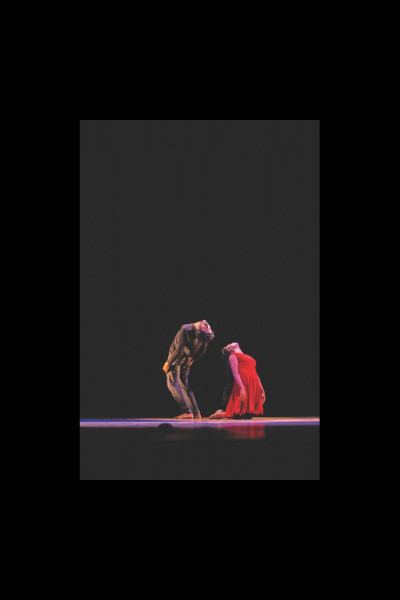The Body speaks anew

The Goethe Institute in Dhaka must be congratulated for presenting the 'Young Choreographers Platform 2016'- an evening of Contemporary Dance, on April 17, 2016 at the Bangladesh Shilpakala Academy, by seven young choreographers, mentored by German dancer Tomas Buenger. This provided a much-needed space for young dancers to converse with and within themselves about their own practice of this kinesthetic art form that embodies both the body and the spirit.
Essentially, contemporary art practice is a space for critical reflection, based on the conviction that the arts, and the artists who practice them, do not exist in a vacuum, but are active participants in the process of shaping cultures. The interest is not in how they paint, and dance, but in what makes them do so!
In South Asian classical dances the language of the body has been meticulously and almost flawlessly conceived. But, with it comes the entire baggage of a certain codified culture of representation that a young dancer needs a lot of courage to break out of. The entire paraphernalia of glittering costumes; the repertoire of mythological stories; and pedagogy that discourages innovation and creativity; all of it sits heavy on the shoulder of young choreographers. Buenger needs to be congratulated on his understated guidance of the dancers by just allowing their dance to be and letting their bodies speak a new, contemporary language.
There was much to appreciate in each presentation, keeping in mind that this is a fairly new experiment. My own organization, 'Shadhona', has conducted innumerable contemporary dance workshops, and has also awarded scholarships to young dancers to train to do so. But, this was the first time that an entire evening was dedicated to the contemporary work of the dancers themselves. In critiquing this first venture, we have to look at technique, content and presentation.
The genre of dance for all the presentations was a fusion of South Asian dances, physical theatre and western contemporary dance and the music followed suit. The only refreshing deviation was Shammy Akter's 'MinE (Me in Myself)' danced first in silence and then with the konnakkol, or mnemonic syllables of Bharatanatyam, recited aloud by the dancer herself. Shammy's work with German theatre director Helena Waldmann was reflected in her presentation. Tahnun Ahmedy incorporated the 'dhol' with exceptional use of Kathak; while Lamiya Saiyara Mela at one point even used the spoken English word. I was hoping, though, that any one of them had dared to utilize more of the vast repertoire of South Asian classical and folk music.
Parvin Sultana Kolly's piece, 'To See or not to See' came as a pleasant surprise, in terms of her stunning experiments with 'lifts' in duet compositions. As expected, Sudeshna Swayamprabha, one of the most talented dancers in Dhaka, came up with a strong performance with her partner; while Snata Shahrin and her partners presented a compelling performance regarding abuse. Md. Farhad Ahmad's work veered more towards 'physical theatre' and came up with some remarkable moves.
Content wise most presentations were clichéd, the discourse being mostly personal explorations and a few on gender and abuse. The body too spoke in an expected language of attraction and repulsion. The audience and I were much taken by Sudeshna's incorporation of an additional box to symbolize 'sharing of power structures' in her presentation 'S-He'. In fact, Mela, too, used the box very intelligently, moving into it, sitting and standing on it. All in all, the dancers spoke in a body language just learnt. As times goes on, proficiency is sure to increase.
As for the technical presentation - the use of light and costume - it was evident that much, much more time needed to be put in conceiving the final image. I'm an optimist though, and believe that performance is a part of learning and will lead to ultimate maturity.
Kudos, once again, to the dancers, their mentor and the organizer.
The author is a Dancer,
Cultural Activist and Researcher.


 For all latest news, follow The Daily Star's Google News channel.
For all latest news, follow The Daily Star's Google News channel. 



Comments